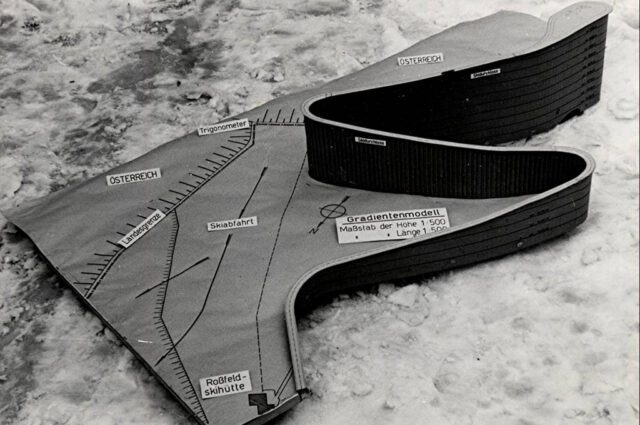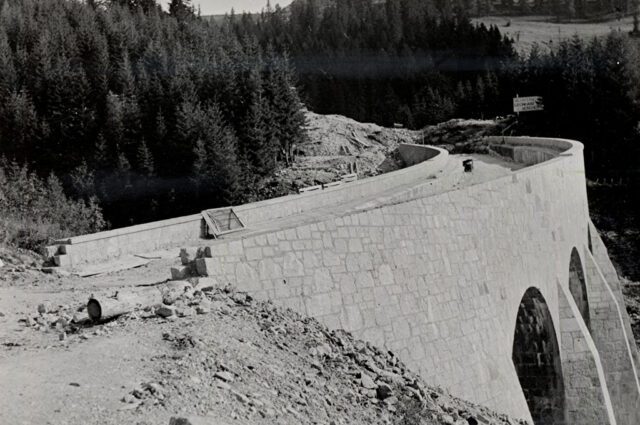Architecture
for eternity
The history of the panoramic road
Overnight stays in vehicles and camping
along the entire route of the Rossfeld Panoramastraße and the associated car parks is not permitted!
1927-1955
The Rossfeld Panoramastraße (formerly Roßfeldhöhenringstraße) was built between 1937 and 1940 as the eastern end of the German Alpine Road by the “State Construction Management for the German Alpine Road”.
The creation of the German Alpine Road: from idea to realisation
The idea of a German Alpine Road was first presented to the public in 1927 by medical councillor Dr Knorz from Prien. It was intended to connect the transverse valleys of the Alps between Lake Constance and Königssee with a closed road along the mountains in order to promote tourism.
In 1933, the National Socialists took up this plan. In November of the same year, construction of the first sections began in Inzell.
The Rossfeld Panoramastraße was not yet included in the original concept for the German Alpine Road, as the model from 1933 and the map from 1937 show. The end of the German Alpine Road was therefore planned at Königssee.
Rossfeld Panoramastraße: a technical masterpiece as the final loop of the German Alpine Road
In addition to several alternative proposals regarding the final section of the German Alpine Road, the Rossfeld Panoramastraße finally prevailed as the final loop. Planning for the Rossfeld Panoramastraße began in April 1937. The work proceeded surprisingly quickly without any major problems, although fourteen bridges, 1.6 kilometres of retaining walls and, above all, extensive drainage measures were necessary.
From interruption to completion: The consequences of war
Construction work was stopped at the beginning of the war, but after a good fifteen months of construction, it had already progressed so far that the ascent was possible on the north side to the Roßfeld ski hut and on the south side to Ofneralm and from there on the unfinished road to the Ahornkasern. This meant that around fifteen kilometres were passable. Only the 800 metre long crest section over the Hahnenkamm to the Ahornalmen remained as a construction gap.
Necessary safety work was carried out in 1947. Berchtesgaden District Administrator Theodor Jakob convinced the Federal Minister of Transport, Dr Hans-Christoph Seebohm, to complete the road and provide the remaining funding. A remarkable achievement, as the war damage to the supra-local road network was enormous and there was no missing link or important pass crossing. Construction work continued in 1953, so that the panoramic road was open to traffic from 1955.













